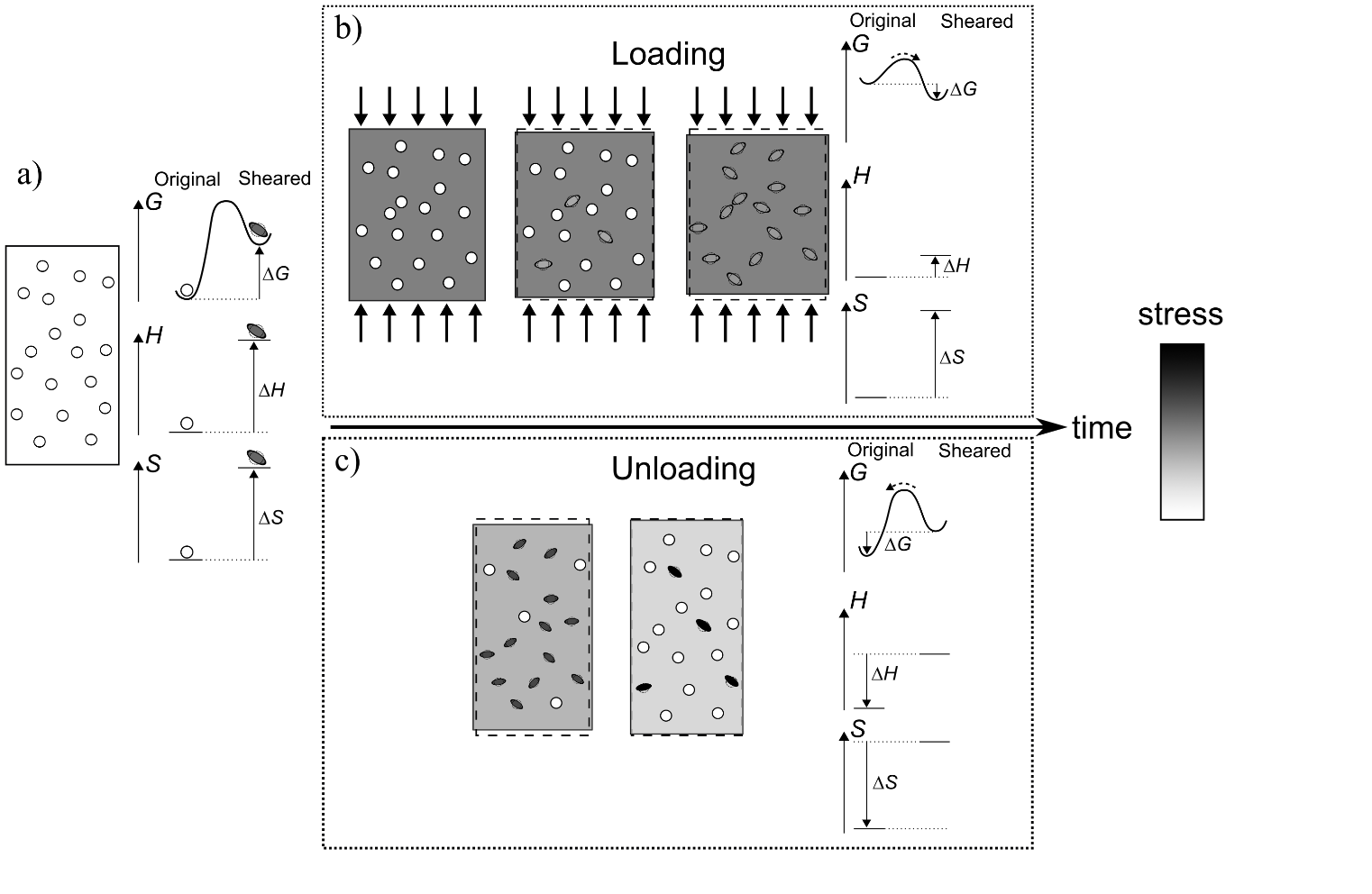When metallic glasses (MGs) are loaded in the elastic/anelastic regime, their energy content increases – as is easily quantified by calorimetry. The stored energies, as high as 515 J mol‒1, are significant, amounting to 10% of the heat of fusion of the alloy. It is natural to associate the stored energy with the work done on the sample. For MGs, as for polycrystalline metals, 1‒10% of the work done in plastic deformation remains stored in the material. This paper shows that for loading below the yield stress, the behaviour is dramatically different: the stored energy is as much as 40 times the work done!
This seems to be ‘something for nothing’ ‒ from where does the stored energy come? This paper provides an understanding of how the energy comes by heat flow from the surroundings. The loading induces endothermic disordering in shear-transformation zones in the MGs: it’s a powerful energy-pumping mechanism.
The paper builds on earlier work by Miguel Costa (for which he won an Acta 2022 Student Award; Paper of the Month February 2023). It establishes a new quantification of anelastic effects in materials: thermal, not just mechanical!
Figure: The thermodynamics of energy storage in metallic glasses when loaded in the nominally elastic regime. The energy is stored in shear transformation zones within an elastically deformed matrix.
M.B.Costa, A.L. Greer, "Enthalpy of anelasticity and rejuvenation of metallic glasses", Acta Materialia, 265 (2024) 119609

